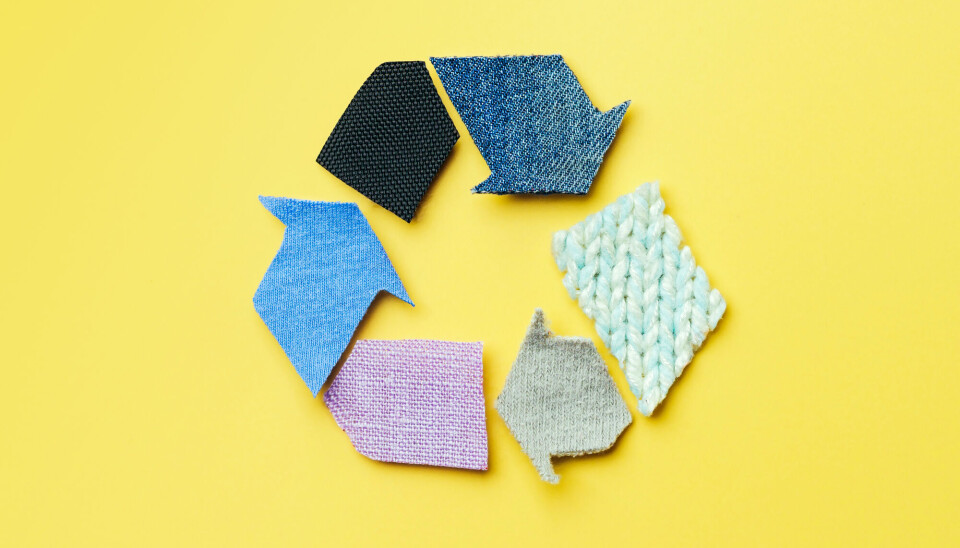Share your science:

How often do you need to use your clothes to be «sustainable»?
SHARE YOUR SCIENCE: The functional unit for a winter coat is 100 days of use. But what does it mean?
It was one of the drearier days in Oslo, and a white and snowy city had suddenly changed into a cesspool of salty water and slush. Tone had made the mistake of wearing her brand new boots made of wool downtown, having left her house higher up in the still snow covered hills. Suddenly she realized that her new wool boots could risk a functional unit melt-down: because they now might needed to be replaced after only few days of use.
Unless she jumped over the huge puddles to avoid the salt-infested slush, she risked ruining her boots.
Ingun, on the other hand, was wearing rubber boots, something we rarely need to do during winter in Norway. As we both looked down at our feet as we emerged from Consumption Research Norway’s offices to grab a beer, we both realized that Ingun had – with her unconventional choice for the season – expanded the functional unit of her boots.
Are we going to reach the ambitious climate and environmental goals, our apparel needs to not only be used 100 times, they need to be used much, much longer.
But wait. A functional unit? Confused?
You should be. A functional unit is at the very core of the current discussion on what makes a pair of winter boots, or a winter coat, more sustainable than a given «base-line» apparel product.
A functional unit goes to what the EU has demanded in their textile strategy:
That apparel must be durable, repairable, recyclable and sustainable. To evaluate this, one of the key words is durable, and this is also how the EU plans to measure functional unit, or perhaps usability is a better word, of products.
A traffic-light system
In the on-going process of developing a base-line for apparel, which is mainly taking place in the Product Environmental Footprint Category Rules (PEFCR), the technical secretariate for clothes and footwear, the goal is to come up with a traffic-light system which we have become familiar with when it comes to electric household goods such as dishwashers and laundry machines.
The EU wants to give consumers ease of choosing the most sustainable or healthy product, and have already launched the idea of a Nutri-Score for food (where smoked salmon will end up with a really bad score). The same logic is being applied to apparel as well:
A color-coded score will inform consumers of what is the best choice.
In this, the functional unit is king. It is the most basic means of measuring products against each other in life cycle assessments (LCA), which are what Product Environmental Footprint Category Rules base their whole existence on.
A functional unit is most often used to describe paint and refers to what the paint is supposed to do: namely to keep the walls protected and good looking for a certain period of time.
We ask, then, what is the functional unit for a winter coat or a pair of boots? According to the latest suggestion put forward, the functional unit for a winter coat is 100 days of use.
For boots the number of days of expected use are the same. This is the expected period of usability you can expect before the item needs replacement, repair or some sort of maintenance to make it usable.
So far, so good.
100 days of expected use
If the base-line winter coat or boots have 100 days of usability, a «more sustainable» coat or pair of boots will have from 101 to an infinite number of days of usability.
For the baseline, in Los Angeles this implies close to 30 years, as the owner of a winter coat or boots would need the product only a few days each year. Which is fine.
However, if the same coat or boots end up in northern Norway, where they can serve a purpose from late September until May, the projected usability of the base-line coat and boots will potentially be less than a year, as 8 months equals 240 days of use.
The use is of the essence
So, what are clothes supposed to DO for us? They need to protect us from unwanted scrutiny of our bodies, keep us warm, keep us cool, dry, or even alive. The point is that apparel’s function is in constant flux. This is obvious when the weather changes, sometimes even during the day.
Arriving at the office in very heavy winter or rubber boots won’t get you through the office-day, but if you fall and break your hip bone because of your very fashionable pair of boots that cut it in the office, the ones with slippery-soles… how functional was that unit?
Our clothes and our footwear are judged by us every single day when we get dressed. Tone made a really bad mistake that day, Ingun made a great choice. And we do that all the time, make good choices, and bad.
We learn and we fail, but it is not a labelling scheme based on LCAs that is going to ensure that we have good clothes that meet the weather, the energy bill, the social expectations, the changing mores of what is acceptable attire in different settings.
Yes, there will be physical issues such as pilling, abrasion, seams that burst, water-repellency that some fibers meet more than others. But the most important thing cannot, by magic, be converted into number of days of use. Because what functions clothes provide for us are so varied and complex.
We would therefore like to open up the discussion:
Just how, is the EU’s plan for product labelling handling this issue? Where global averages are the name of the game, giving us information that is at best so-so, but at the end of the day, completely meaningless.
A need to look at actual use
To make sense, the LCA community needs to figure out what a functional unit is for apparel depending on whose wardrobe the items end up in, and we need research to back this up.
Apparel’s actual usability or functional unit cannot be measured through simple testing of «durability» or «repairability» measures. This can only be done through looking at actual use. To what degree apparel will have a long lifespan and be «used up», does not depend on how durable the material is or isn’t.
Equally important is that we like the item and that we take good care of it. Which means not wearing shoes made of wool on days when the city streets and sidewalks are salty slush. In stead of mandating regulations that predict a certain length of use, we should turn the whole reasoning up-side-down and base the score on actual use.
This can be done simply through pick-analysis of apparel waste and donated apparel for reuse. This is simply because function and use is important.
The difference - if we are measuring environmental impact - of something that is used once or 500 times is enormous. Are we going to reach the ambitious climate and environmental goals, our apparel needs to not only be used 100 times, they need to be used much, much longer.
FURTHER READING:
Share your science or have an opinion in the Researchers' zone
The ScienceNorway Researchers' zone consists of opinions, blogs and popular science pieces written by researchers and scientists from or based in Norway.
Want to contribute? Send us an email!






























